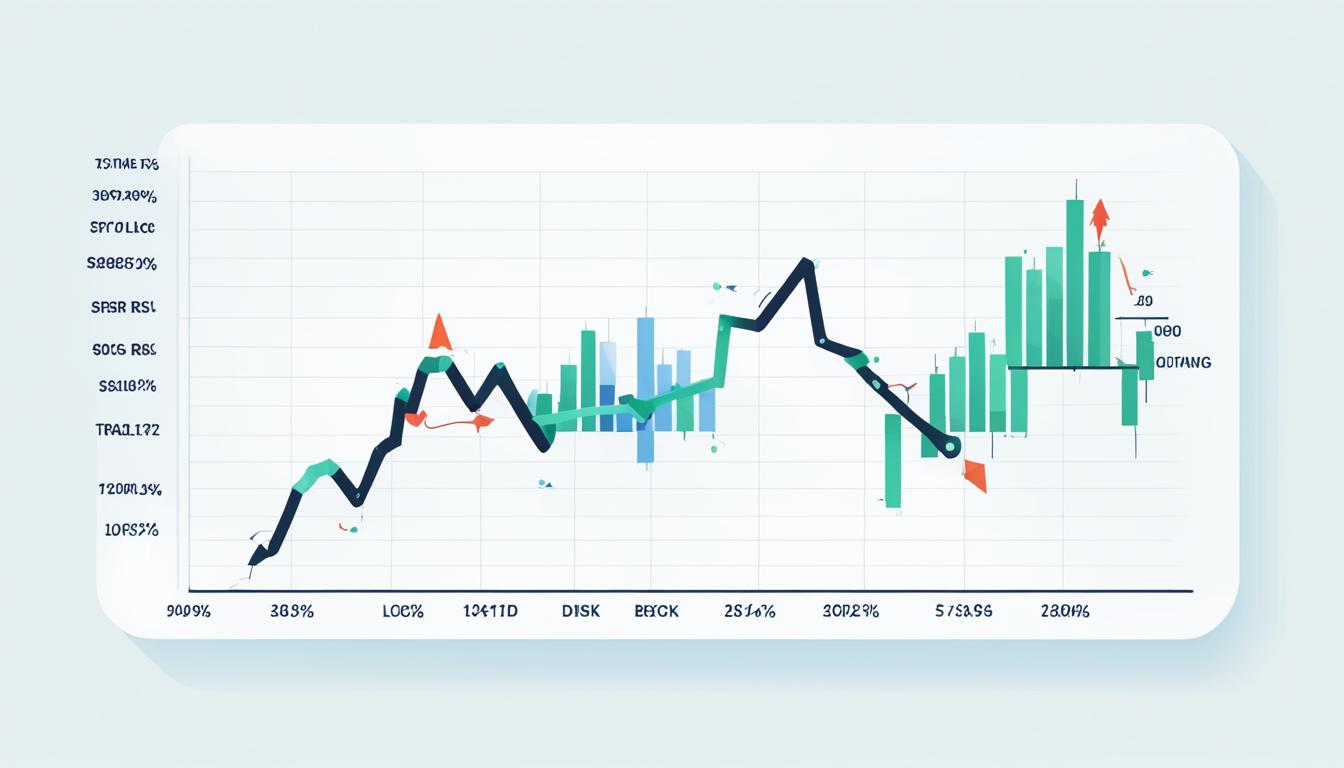Embarking on the journey of trading can often feel like navigating through a tempestuous sea of market fluctuations. One of the key challenges traders face is how to reduce drawdown in trading. Drawdown—the peak-to-trough decline during a specific record period of an investment—can be a sobering measure of pain tolerance for the investor. Although occasionally viewed as an unavoidable aspect of the trading process, minimizing trading drawdown is essential for preserving capital and ensuring the longevity of one’s trading career.
Reducing trading drawdown is not merely about protecting funds; it’s about creating a sustainable path that facilitates continuous growth and success in the financial markets. To this end, various techniques to control drawdown are employed by shrewd investors. These methods are designed to strategically limit exposure during downturns while positioning traders for recovery and advancement when markets rebound.
This introduction sets the stage for an in-depth exploration of strategies focused on drawdown reduction, providing you with actionable insights to fortify your portfolio against the whims of market tides. Stay tuned as we delve into the anatomy of drawdown and the most effective practices to manage and mitigate its impact on your trading efforts.
Understanding the Impact of Drawdowns on Your Trading Strategy
When embarking on the journey of financial trading, awareness of potential risks and the ability to mitigate them is paramount. Among the metrics that provide critical insight into the health of a trading strategy is the drawdown. This measurement reflects the volatility a portfolio can endure, and understanding its influence can greatly assist in sculpting more resilient trading systems.
Defining Drawdown in Trading Contexts
In the sphere of trading, a drawdown denotes the difference between a relative peak in the equity curve and a following low. This figure is not merely a reflection of numbers; it embodies the potential risk inherent in a trading strategy. Minimizing trading drawdown is thus not merely a preference but a strategic imperative for long-term sustainability in the market.
The Significance of Historical vs. Expected Measures of Risk
A robust trading system is often evaluated based on its historical performance, and this is where backtested measures like drawdown excel. They qualitatively narrate the story of a strategy’s past endurance, which can set expectations for future volatility. On the other hand, standard deviation projects a theoretical foresight into future risk, based on previous price fluctuations. Both indicators carry weight, but the lens through which they are viewed depends upon the trader’s blueprint for risk and drawback management.
Comparing Drawdown with Other Risk Metrics Like Standard Deviation
Unlike the forward-looking standard deviation, drawdown details the historical depth and duration of equity dips which provide a unique vantage point. These insights offer significant value when building strategies to lower drawdown, as they shed light on the practical pressure points of a trading system.
Strategizing around these metrics allows for more nuanced risk management, aiming to preserve capital and temper the drawdown risk. Here is a comparison of how different risk metrics, including drawdown, can shape the development and refinement of a trading system:
| Metrics | Description | Utility |
|---|---|---|
| Drawdown | Peak to trough decline in portfolio value | Helps identify maximum equity loss and system recovery specifics |
| Standard Deviation | Measure of price volatility | Indicates expected range of price movements |
| Sharpe Ratio | Risk-adjusted return compared to a risk-free asset | Compares performance taking into account the risk taken |
| Sortino Ratio | Similar to Sharpe, but only considers downside volatility | Focuses on the risk of negative returns |
| Maximum Drawdown | Largest drop from peak to bottom in portfolio value | Signifies the highest historical loss endured by the trading strategy |
Delving deeper into these metrics, especially in the case of drawdown, allows traders to backtest and enhance their trading systems, ensuring a lower risk of significant downturns and a smoother equity curve over time.
Strategies for Minimizing Trading Drawdown
As an investor, preventing excessive drawdown is pivotal to maintaining the health and longevity of your portfolio. In the pursuit of ways to reduce drawdown risk, a multifaceted approach centered around proper portfolio management, precise assessment of risk tolerance, and an understanding of trading psychology is necessary for sustained success. Below, we delve into a series of strategies aimed at strengthening your trading defense against drawdowns.
- Develop a robust trading plan that clearly defines maximal drawdown thresholds to ensure they remain below 25%, fostering sustainability and psychological resilience.
- Diversify across different markets and asset classes to spread risk and potentially decrease the impact of a drawdown in any single area.
- Adopt a holistic position sizing technique, adjusting the scale of trades based on a comprehensive evaluation of your risk margin.
- Use risk management tools, such as stop-loss orders, to cap potential losses and prevent fallout from volatile market swings.
- Regularly review and adjust your trading strategies based on both market performance and changes in your risk tolerance level.
- Engage with educational resources on trading psychology to better navigate periods of drawdown without succumbing to stress-induced decision making.
These strategies not only serve as a shield against excessive drawdown, but they also embed a layer of strategic foresight into your trading protocol. Key to effective drawdown management is the preparation for a range of scenarios that could impact your investments. In addition, by maintaining a well-balanced trade disposition and adhering to predefined risk parameters, you can enhance your portfolio’s resilience and position yourself for achievable, long-term gains.
How to Reduce Drawdown in Trading: Implementing Effective Techniques
Drawdown management is a crucial skill in trading that can significantly improve a trader’s resilience and success. It involves proactive strategies and a deep understanding of the factors influencing the decline in investment value. Traders who can mitigate drawdown causes and master trade drawdown management are better equipped to achieve consistent results and control portfolio drawdown.
Identifying and Mitigating the Causes of Drawdown
To mitigate drawdown effectively, it is essential to conduct a thorough analysis of past trading performance. This enables traders to identify the root causes of drawdowns and develop specific tactics to address them. Market volatility, trading style mismatches, and inappropriate risk levels can all contribute to drawdown. By examining these areas, traders can adapt their strategies to better withstand market fluctuations.
Portfolio and Trade-Level Drawdown: Knowing the Difference
Understanding the distinction between trade-level and portfolio-level drawdown aids in crafting a balanced approach to risk management. A trade-level drawdown refers to the loss experienced in a single position, while portfolio-level drawdowns consider the aggregate decline across all positions. This understanding helps traders scale their risk and apply correct measures to each scenario, ensuring continuous alignment with their intended risk tolerance.
Adjusting Trade Sizes and Stop Losses to Manage Risk
Controlling trade sizes and utilizing stop losses are two of the most practical tactics to manage risk. By adjusting the size of each trade relative to the overall account balance and applying stop-loss orders that reflect the trader’s risk tolerance, potential losses can be capped, protecting the trading capital from significant downturns. This approach also helps maintain the psychological composure necessary for sustained trading. The table below outlines key steps traders can take to manage trade sizes and stop losses:
| Action | Description | Benefit |
|---|---|---|
| Trade Size Adjustment | Calculate and set trade sizes as a percentage of the total account balance. | Maintains consistent risk levels and prevents overexposure on a single trade. |
| Stop Loss Implementation | Predefine exit points for trades to limit potential losses. | Automatically secures trades against unpredictable market swings and preserves capital. |
| Risk-Reward Ratio | Established ratio between the potential profit and loss of a trade. | Encourages disciplined trading by setting clear profit targets against acceptable loss limits. |
Psychological and Behavioral Considerations When Facing Drawdowns
The journey of a trader is not just shaped by numbers and trends but also by the mental and emotional fortitude required to make informed decisions under pressure. Understanding the psychological nuances and behavioral patterns associated with trading drawdowns is invaluable for maintaining composure and adherence to one’s trading strategy even during tumultuous market phases.
Recognizing the Psychological Effects of Large Drawdowns
Tackling the psychological impact of significant drawdowns is crucial. They act as stress tests not just for portfolio resilience but also for a trader’s mental equilibrium. When a trader’s equity curve descends, it’s not uncommon for emotions like fear and uncertainty to surface. The principles of trading psychology teach us that awareness of our mental state can be a powerful tool in navigating these challenges.
Preventing Emotional Decisions During Drawdown Periods
A critical aspect of overcoming drawdowns is preventing emotional trading decisions. While experiencing a drawdown, if emotions override logic, traders tend to deviate from their strategies, making impulsive trades that further risk their capital. Referencing behavioral finance, one can understand why emotions can lead to poor decision-making, and more importantly, how to mitigate such influences.
- Establish pre-defined risk management rules
- Set clear entry and exit criteria for trades
- Keep a trading journal to log emotional triggers
- Take regular breaks to reassess your mindset
Staying Disciplined and Trusting Your Strategy
Maintaining strategy adherence during drawdowns is a testament to a trader’s discipline. Such commitment is founded on a strong belief in one’s trading plan and an understanding that drawdowns are a natural part of the trading landscape. Drawing on the tenets of trading psychology, fostering trust in one’s system can mitigate knee-jerk reactions to market swings.
- Review previous successful trades to reinforce confidence
- Assess strategy effectiveness periodically for reassurance
- Stay connected with the trading community for support and perspective
- Seek continual education to solidify understanding and competence
Facing drawdowns with a composed mind and a fortified strategy enables traders to navigate through financial storms and emerge with their portfolios—and psyches—intact.
Conclusion
In summary, the journey toward managing drawdown in trading is paved with discipline, robust strategies, and an unwavering dedication to risk management. While the allure of high returns remains a strong motivator, the astute trader knows that embracing trading risks with a calculated approach is central to not just surviving but thriving in the tumultuous waters of the financial markets. It is only through the meticulous balance of risk and return that one can truly begin optimizing portfolio performance.
Furthermore, possessing the psychological fortitude to handle market volatilities ensures that traders have the necessary resilience to recover from setbacks. The harmony between knowledge, composed mindset, and effective strategy execution is a cornerstone for long-term trading success. By embedding these principles into their trading regimen, traders set themselves up for sustainable growth and productivity, even in the face of adverse market movements.
Ultimately, the integration of strategic planning, continuous education, and adherence to a disciplined trading framework are indispensable for traders aiming to effectively manage drawdown. As they refine their methods and adapt to the ever-changing market dynamics, the foundational elements of risk control and psychological readiness form an indomitable core that promotes enduring success in trading.
FAQ
Effective strategies to reduce drawdown risk include diversifying trades across various markets, employing risk management tactics such as proper position sizing, and setting stop-loss orders. Building a diversified portfolio where different assets have uncorrelated drawdown periods can also minimize overall portfolio risk.
Preventing emotional decisions during drawdown periods involves building mental resilience through education, creating a detailed trading plan with predefined rules, and sticking to it. It’s also helpful to engage with behavioral finance literature to stay informed about common cognitive biases and to develop strategies for coping with the emotional stress of trading losses.






